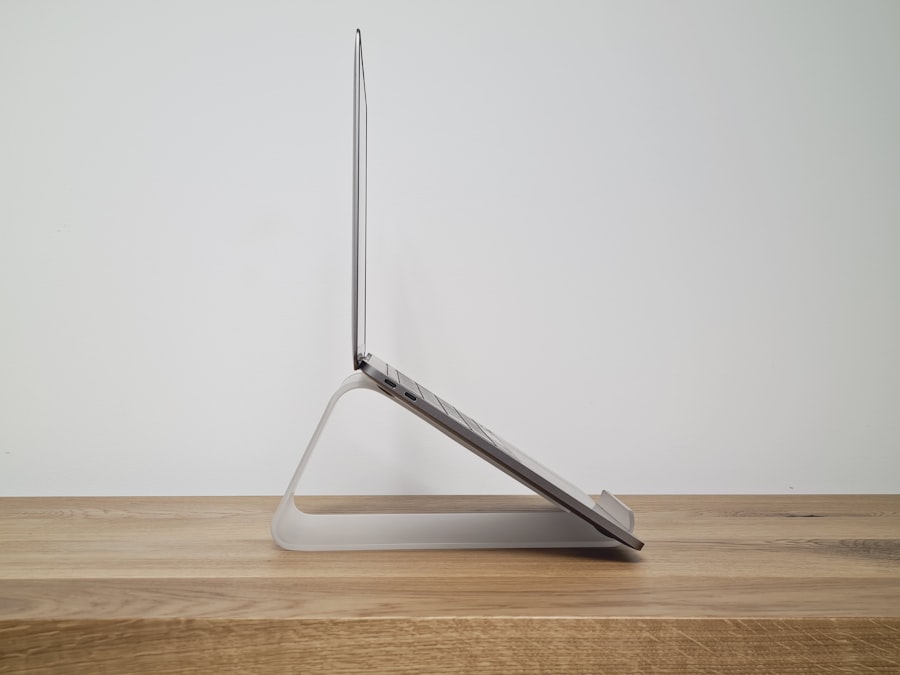A sit-stand desk, also known as a height-adjustable desk or standing desk, is a versatile piece of office furniture designed to accommodate both sitting and standing positions. These desks typically feature a mechanism that allows users to easily adjust the height of the work surface, enabling them to switch between sitting and standing throughout the day. This adaptability caters to the varying needs of individuals, promoting a more dynamic work environment.
The design can range from simple manual adjustments to sophisticated electric models that allow for seamless transitions at the touch of a button. The concept of sit-stand desks has gained significant traction in recent years, driven by growing awareness of the health risks associated with prolonged sitting. Research has shown that sedentary behavior can lead to a host of health issues, including obesity, cardiovascular disease, and musculoskeletal disorders.
As a result, many workplaces are now incorporating sit-stand desks into their office layouts, recognizing their potential to enhance employee well-being and productivity. The rise of remote work has further popularized these desks, as individuals seek to create ergonomic home office setups that support their health and comfort.
Key Takeaways
- A sit stand desk is a height-adjustable desk that allows users to switch between sitting and standing while working.
- Using a sit stand desk can lead to improved posture, increased energy levels, and reduced risk of health issues associated with prolonged sitting.
- To set up and use a sit stand desk effectively, it’s important to adjust the desk to the correct height, alternate between sitting and standing, and incorporate movement into the workday.
- When transitioning to a sit stand desk, it’s helpful to start gradually, use anti-fatigue mats, and listen to your body’s signals for when to sit or stand.
- Proper posture is crucial when using a sit stand desk to prevent strain on the body and maintain comfort and productivity.
The Benefits of Using a Sit Stand Desk
The benefits of using a sit-stand desk extend beyond mere convenience; they encompass a wide range of physical and mental health advantages. One of the most significant benefits is the reduction in sedentary behavior. Studies have indicated that alternating between sitting and standing can help mitigate the negative effects of prolonged sitting, such as increased risk of chronic diseases.
By incorporating movement into the workday, users can improve their overall health and reduce the likelihood of developing conditions associated with a sedentary lifestyle. In addition to physical health benefits, sit-stand desks can also enhance mental well-being. Many users report increased energy levels and improved mood when they have the option to stand while working.
This boost in energy can lead to heightened focus and productivity, as standing encourages better circulation and oxygen flow to the brain. Furthermore, the ability to change positions throughout the day can help combat fatigue and maintain engagement with tasks, making it easier to tackle challenging projects or lengthy meetings.
How to Set Up and Use a Sit Stand Desk

Setting up a sit-stand desk requires careful consideration of various factors to ensure optimal ergonomics and comfort. First and foremost, it is essential to adjust the desk height so that your elbows are at a 90-degree angle when typing. The keyboard should be positioned at or slightly below elbow height, allowing for relaxed shoulders and wrists.
Additionally, the monitor should be placed at eye level or slightly below, approximately an arm’s length away, to prevent neck strain. Proper alignment of these elements is crucial for reducing the risk of musculoskeletal issues. Once the desk is set up correctly, users should develop a routine for alternating between sitting and standing.
A common recommendation is to start with short intervals—perhaps 20 to 30 minutes of standing followed by a similar duration of sitting—and gradually increase standing time as comfort levels improve. It is also beneficial to incorporate movement during standing periods, such as shifting weight from one foot to another or using an anti-fatigue mat for added comfort. This approach not only enhances physical well-being but also encourages a more active work style.
Tips for Transitioning to a Sit Stand Desk
Transitioning to a sit-stand desk can be an adjustment for many individuals, particularly those who are accustomed to sitting for extended periods. To ease this transition, it is advisable to start slowly. Begin by incorporating short standing sessions into your daily routine and gradually increase the duration as your body adapts.
This gradual approach helps prevent discomfort and allows you to become accustomed to the new working position without overwhelming your muscles and joints. Another effective strategy is to establish reminders for yourself to switch positions throughout the day. Setting timers or using apps designed for this purpose can help you stay mindful of your posture and encourage regular movement.
Additionally, consider pairing your sit-stand desk with other ergonomic tools, such as an adjustable chair or footrest, which can further enhance comfort during both sitting and standing periods. By taking these steps, you can create a more seamless transition that promotes long-term adherence to this healthier work style.
The Importance of Proper Posture When Using a Sit Stand Desk
Proper posture is paramount when using a sit-stand desk, as it directly impacts comfort and overall health. When standing, it is essential to distribute your weight evenly between both feet and avoid locking your knees. Engaging your core muscles can help maintain stability and reduce strain on your lower back.
Additionally, keeping your shoulders relaxed and your wrists in a neutral position while typing can prevent discomfort and potential injuries over time. When seated, maintaining good posture is equally important. Your feet should be flat on the floor or on a footrest, with your knees at or slightly below hip level.
The backrest of your chair should support the natural curve of your spine, promoting an upright position without excessive slouching. Regularly checking in on your posture throughout the day can help reinforce these habits and ensure that you are maximizing the ergonomic benefits of your sit-stand desk.
Choosing the Right Sit Stand Desk for Your Needs

Height Adjustment Range
One critical aspect is the desk’s height adjustment range; it should accommodate both your sitting and standing heights comfortably. For taller individuals, desks with a greater height range are essential to ensure proper ergonomics while standing. Conversely, shorter users may require desks that can lower sufficiently for comfortable sitting.
Stability and Durability
Another consideration is the desk’s stability during use. A sturdy frame is crucial for preventing wobbling or shaking when typing or using other equipment on the surface.
Desk Size and Additional Features
Additionally, consider the size of the desk; it should provide ample space for your monitor, keyboard, and any other accessories you may need while working. Some models also offer built-in cable management systems or additional storage options, which can help keep your workspace organized and clutter-free.
Incorporating Movement into Your Workday with a Sit Stand Desk
Incorporating movement into your workday while using a sit-stand desk is vital for maximizing its benefits. Simply alternating between sitting and standing is a great start, but adding more dynamic movements can further enhance your overall well-being. For instance, consider integrating short walking breaks into your routine—taking a stroll around the office or home every hour can stimulate circulation and refresh your mind.
Additionally, you might explore simple exercises that can be performed at your desk or nearby workspace. Stretching your arms, neck, and back can alleviate tension that builds up during prolonged periods of sitting or standing. Some users find success with resistance bands or small weights that allow for quick strength training sessions during breaks.
By actively incorporating movement into your day, you not only improve physical health but also foster creativity and problem-solving skills.
Maximizing Productivity with a Sit Stand Desk
Maximizing productivity while using a sit-stand desk involves more than just alternating between positions; it requires creating an environment conducive to focus and efficiency. One effective strategy is to establish specific goals for each work session—whether it’s completing a project or tackling emails—while utilizing both sitting and standing positions strategically throughout the day. For example, you might choose to stand while brainstorming ideas or engaging in collaborative discussions, reserving seated time for tasks that require deep concentration.
Moreover, consider personalizing your workspace with elements that inspire productivity. This could include adding plants for improved air quality and aesthetics or utilizing organizational tools that keep essential items within reach. Noise-canceling headphones or background music can also enhance focus by minimizing distractions in open office environments or busy home settings.
By thoughtfully curating your workspace around your sit-stand desk, you can create an atmosphere that fosters productivity and creativity.
The Impact of a Sit Stand Desk on Health and Wellbeing
The impact of using a sit-stand desk on health and well-being is profound and multifaceted. Research has consistently shown that individuals who incorporate standing into their work routine experience lower levels of discomfort related to musculoskeletal issues compared to those who remain seated all day. Furthermore, studies suggest that regular use of sit-stand desks may contribute to weight management by increasing calorie expenditure throughout the day.
Beyond physical health benefits, there are psychological advantages associated with using sit-stand desks as well. Many users report feeling more energized and motivated when they have the flexibility to change positions during their workday. This increased energy often translates into improved mood and job satisfaction, which are critical components of overall well-being in both personal and professional contexts.
Creating a Functional Workspace with a Sit Stand Desk
Creating a functional workspace around a sit-stand desk involves thoughtful organization and design choices that enhance usability and comfort. Start by ensuring that all essential tools—such as monitors, keyboards, mice, and writing materials—are easily accessible from both sitting and standing positions. Utilizing monitor arms can free up valuable desk space while allowing for optimal screen positioning.
Incorporating ergonomic accessories can further enhance functionality; items like wrist rests or footrests can provide additional support during both sitting and standing periods. Additionally, consider implementing organizational solutions such as drawer units or shelving systems that keep clutter at bay while ensuring everything you need is within arm’s reach. A well-organized workspace not only promotes efficiency but also contributes to a more enjoyable working experience.
Maintaining and Caring for Your Sit Stand Desk
Maintaining and caring for your sit-stand desk is essential for ensuring its longevity and optimal performance over time. Regular cleaning is crucial; dust accumulation can affect both aesthetics and functionality. Use gentle cleaning solutions suitable for the materials used in your desk’s construction—avoid harsh chemicals that could damage surfaces.
Additionally, periodically check all moving parts—especially if you have an electric model—to ensure they are functioning correctly without any obstructions or wear-and-tear issues. Lubricating mechanical components may be necessary depending on usage frequency; consult the manufacturer’s guidelines for specific maintenance recommendations tailored to your model. By taking proactive steps in caring for your sit-stand desk, you can enjoy its benefits for years to come while maintaining an efficient workspace.
If you are considering incorporating a sit-stand desk into your office space, you may also be interested in learning more about modern interior design trends. Check out this article on modern interior design to get inspiration on how to create a stylish and functional workspace. By combining a sit-stand desk with a modern interior design aesthetic, you can create a workspace that promotes productivity and well-being.


